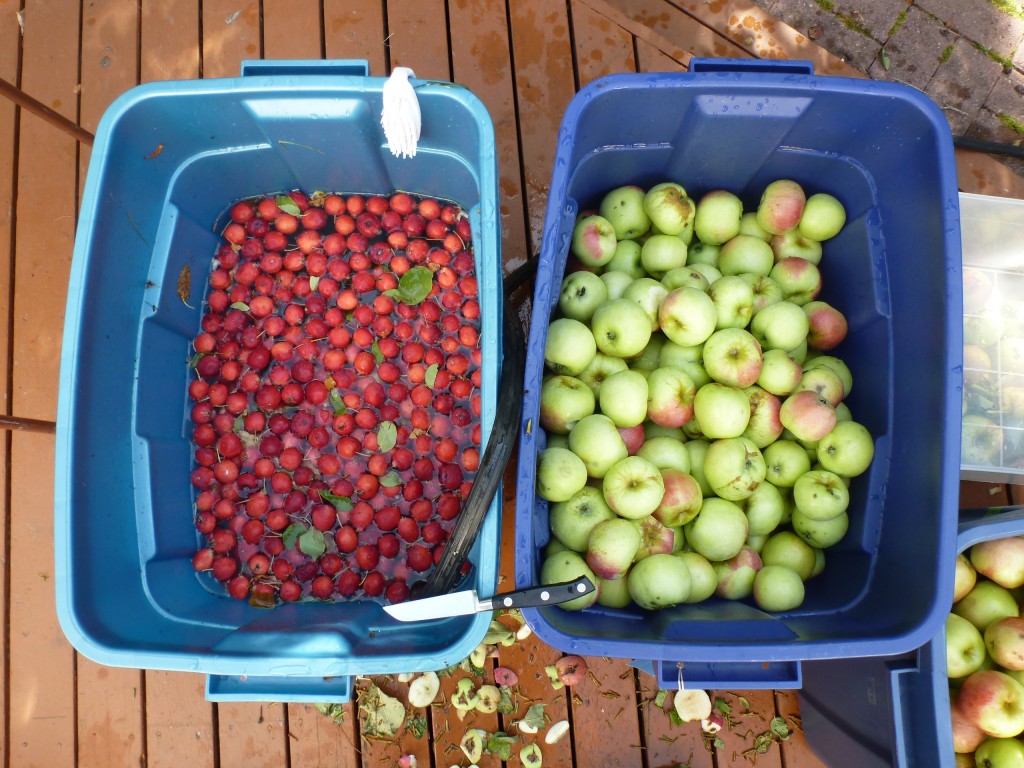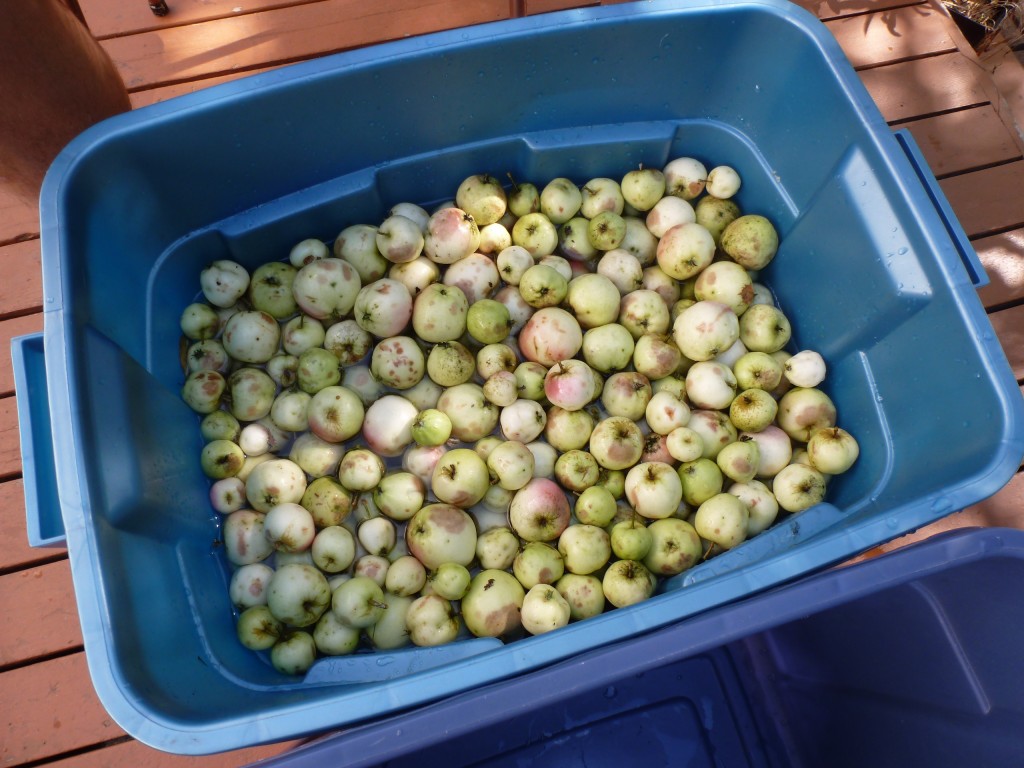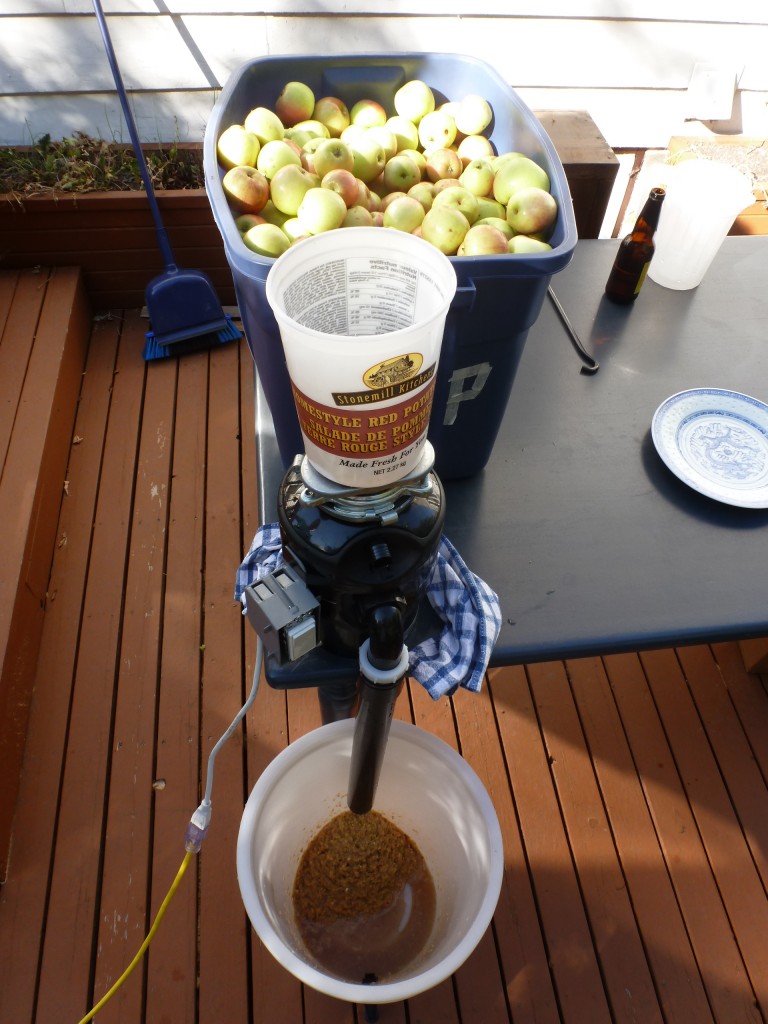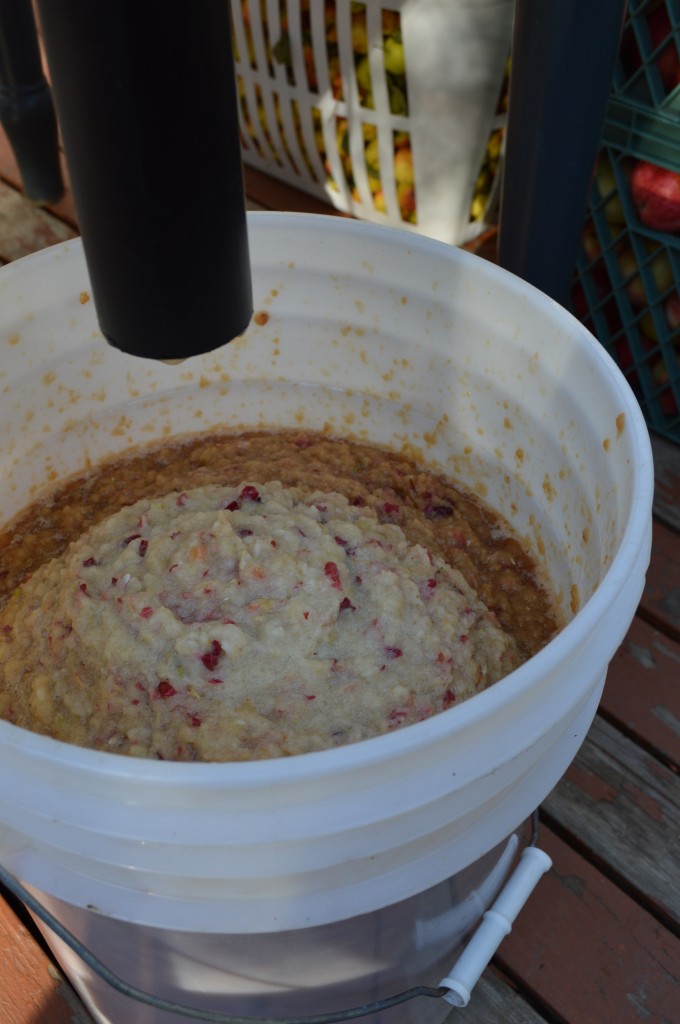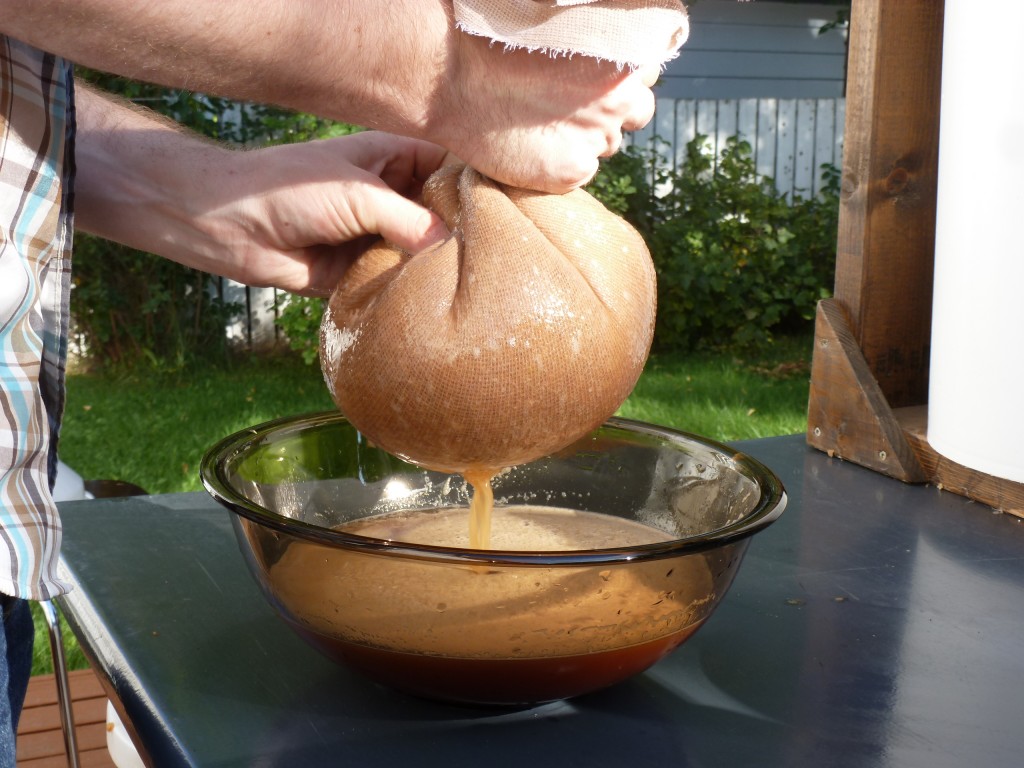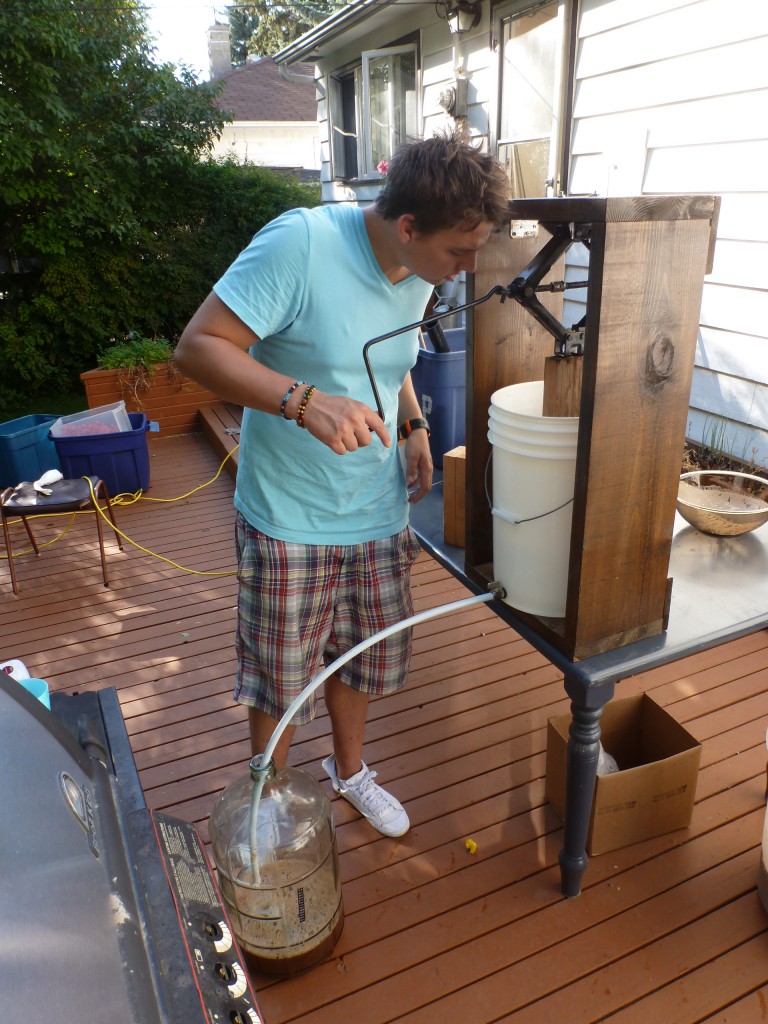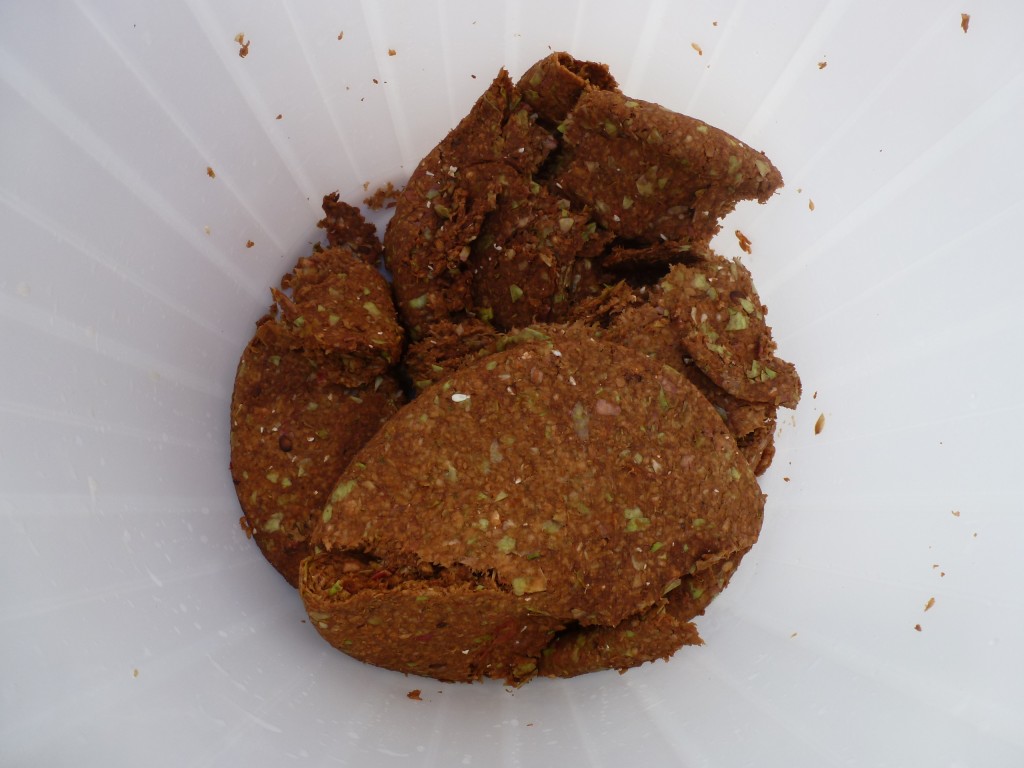Yet ev’n this Season Pleasance blithe affords,
Now the squeez’d Press foams with our Apple Hoards.
-John Gay
To most contemporary city-folk the word “cider” implies fermented apple juice. My grandparents made the distinction between “cider” (juice pressed from apples) and “hard cider” (fermented apple juice). For now I have simply made cider, and will leave the discussion of hard cider and its variants for another post.
This week we picked about 150 lbs of apples from three different trees:
- one beautiful, well-trained tree yielding large, blushing apples, which I will be referring to as “Ron’s apples”;
- one crabapple tree with bright red, tart fruit;
- one hideous, unkempt tree in our backyard that grows small green apples. The tree is so large and spindly that we harvested its apples by climbing into it, shaking it vigorously, and then collecting the fallen fruit from the surrounding grass.
After harvesting, we borrowed a crusher and press from Kevin. The crusher is a garburator, intended for a kitchen sink, outfitted with a hopper and a power switch. You can read about Kevin’s design here. The press is a strong wooden frame with a carjack that drives a plunger onto the crushed fruit, described here. Thank you, Kevin.
Some notes and photos from our cider day.
Here are the apples we used. Below, left are the crab apples. Below, right, Ron’s gorgeous apples.
Some sources say to wash and stem the apples before crushing. Others say this is unnecessary. I subscribe to the latter theory.
You also don’t need to peel or core the apples.
Below is Kevin’s crusher, doing what it does best. The apple mash comes out white, then rapidly oxidizes to the rusty colour we associate with apple juice. With a traditional crusher the mash will sometimes be put through a second time for a finer grind. This in unnecessary with the garburator. It’s very thorough.
After being pressed, the cheese is dense, dry, and crumbly. The left-over bits are called pomace. In many parts of Europe grape pomace is mixed with water and sugar, fermented into a weak “wine,” and then distilled. The resulting liquor is called grappa in Italy (especially famous in the provinces of Friuli and Piedmonte), marc in France, and tsipouro in Greece, to name only a few of the regional variations. I suspect a similar drink could be made from this apple pomace.
We crushed and pressed the three different apples separately so we could taste the juices on their own. Tasting notes:
- Ron’s Apple Cider – A good balance of tart and sweet, with a hint of almond extract, probably from the seeds and skins. Slightly silty mouthfeel. Reddish brown.
- Crabapple Cider – Very tart, but still surprisingly flavourful and pleasant to drink. Brilliant pinkish red.
- Our Backyard Apple Cider – This was the real surprise for me. They are by no means choice eating-apples, and most were battered and bruised by our harvesting method. Their juice, however, was fantastic. A great balance of tart and sweet, and a distinct grassy finish.
The three types of cider were then mixed together. While “single variety” may be popular with coffee and wine, apple cider and any of its fermented and distilled derivatives are always made from a blend of several apple varieties. Half the work of the cider producer is in finding the right mix of sweet, tart, and aromatic apples to create a balanced drink.
Once mixed, the cider was syphoned into carboys to clear over night. The roughly 150 lbs of apples made 40 L of cider.
This really is one of those epic, rewarding, seasonal “chores,” like tapping maple trees and slaughtering pigs. There’s lots to be done with the cider, yet. Stay tuned.
